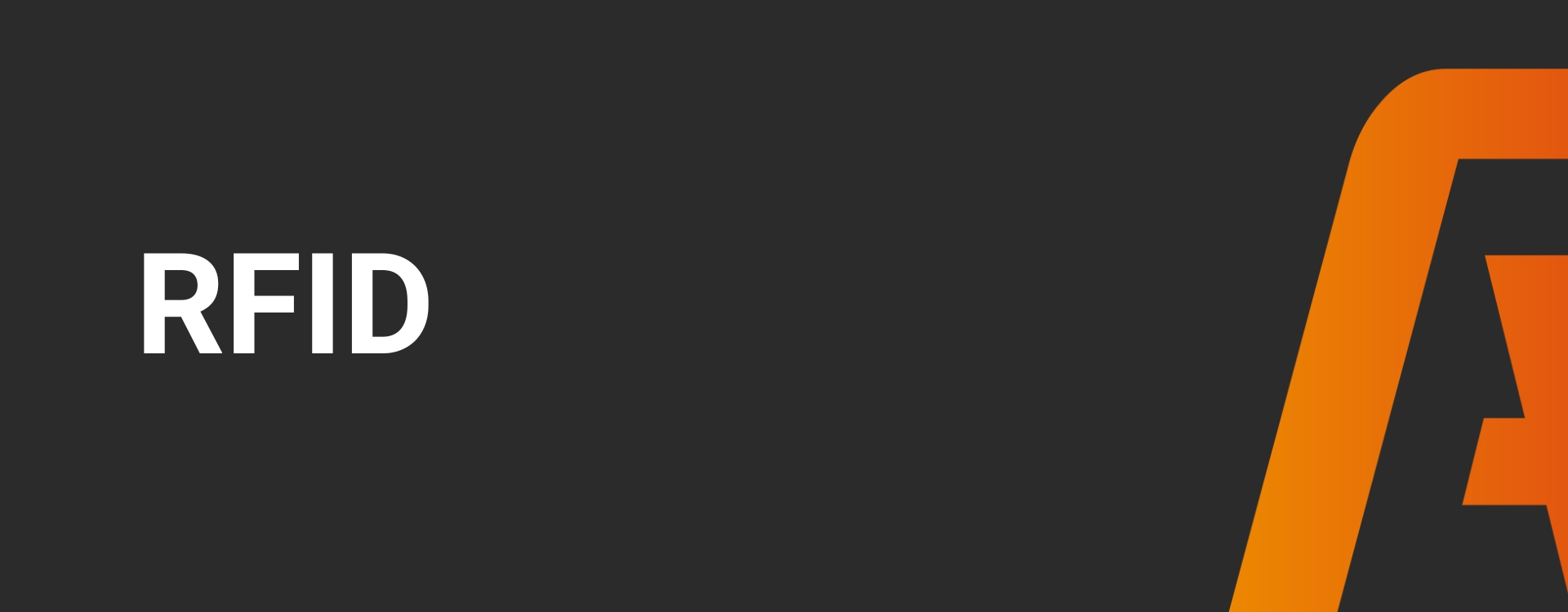» What is RFID?
» How does RFID work?
» What is RFID used for?
» Is RFID the same as NFC?
» What are the benefits of RFID?
» What are the security risks and how to mitigate them?
» How to integrate RFID with other systems, such as barcode scanning and GPS tracking?
» How does RFID work together with IoT and other wireless technologies?
» RFID and Ignition
» Explore Ignition
Other knowledge base

RFID
In this article
» What is RFID?
» How does RFID work?
» What is RFID used for?
» Is RFID the same as NFC?
» What are the benefits of RFID?
» What are the security risks and how to mitigate them?
» How to integrate RFID with other systems, such as barcode scanning and GPS tracking?
» How does RFID work together with IoT and other wireless technologies?
» RFID and Ignition
» Explore Ignition
What is RFID?
RFID stands for Radio-Frequency Identification. It is a technology that uses radio waves to communicate between a reader and a tag. The tag is attached to an object and can be read by a reader. The reader emits a radio signal to the tag, which sends back the data stored in the chip to the reader.
There are two main types of tags: passive and active. Passive tags do not have their own power source and rely on the reader to provide power to the microchip. Active tags have a battery and transmit a signal without the reader powering them.
How does RFID work?
An RFID system consists of three components: the reader, the tag, and the software that processes the data.
The tag is a small device that contains information about an object or person. A tag consists of a microchip and an antenna. The microchip stores the data, and the antenna transmits the information to the reader when it is within range.
The reader is a device that uses radio frequencies to read the stored information from the tag. It also has an antenna that receives and decodes the tag’s signal, then sends the information to the software.
The accompanying software processes the information sent by the reader and presents it to the user. For example, this could involve displaying information about the object or person carrying the tag, or updating inventory levels in a store.
What is RFID used for?
It is used for a wide range of applications. The tags can be used to track and manage inventory in warehouses, factories, and stores. It enables companies to gather real-time information about inventory levels and helps reduce theft and loss of goods.
The tags can also be used to track goods and improve supply chain management. It assists in tracking shipments, managing the delivery of goods, and minimizing delays and errors.
Additionally, the tags can be deployed for access control to buildings, parking lots, and other secure areas. Or to identify and track animals, such as managing the health and breeding of livestock.
Is RFID the same as NFC?
RFID and NFC are related technologies, but they are not the same. NFC stands for Near Field Communication and is a wireless communication technology derived from RFID technology. Like RFID, NFC uses wireless communication to transmit and receive data between two devices.
However, the main difference is that NFC enables a more advanced and complex form of communication, such as two-way communication between devices at close range. This allows for mobile payments, scanning tickets, and using contactless communication for access control.
Although there is some overlap with NFC, they are still different technologies that can be used in different applications. For example, RFID is more useful for tracking objects over long distances, while NFC is better suited for mobile payments and contactless communication at close range.
What are the benefits of RFID?
RFID offers several advantages over other identification and tracking technologies, such as barcodes. Here are some of the key benefits of RFID:
- Automatic identification: Tags are automatically readable without the need for visual contact between the tag and the reader. This allows for faster and more efficient identification and tracking of objects.
- Data storage: Tags can store much more information than barcodes. For example, some RFID tags can store multiple data categories, such as product identification, origin, manufacturing date, expiration date, price, and more.
- Fast data transfer: Tags transmit information much faster than barcodes. This enables real-time tracking of objects and rapid response to changes in inventory or locations.
- Ease of use: Tags can be attached to objects and easily read without requiring direct line of sight. This allows for identification and tracking of objects in hard-to-reach or unfavorable environments.
- Cost savings: This technology helps reduce costs by reducing labor-intensive tasks such as manual inventory management, reducing errors, improving inventory level accuracy, and reducing theft.
- Security: Tags can be used to control access to buildings and protect personal data, improving security.
What are the security risks and how to mitigate them?
Just like with other technologies, RFID also presents certain security risks. Below are some of the key risks and ways to mitigate them:
- Information security: Tags may contain personal or business-sensitive information that can be read by unauthorized individuals. To mitigate this risk, companies use secure tags and encryption protocols to ensure that only authorized individuals have access to the information.
- Privacy: Tags can be used to track or identify individuals, which constitutes a privacy breach. To mitigate this risk, companies only use tags for legitimate business purposes. They protect the collected information and do not share it with unauthorized parties.
- Fraud: Tags can be copied or manipulated, enabling theft of goods or fraudulent payment transactions. To mitigate this risk, companies use secure tags with unique identification numbers and authentication protocols to prevent tags from being copied or manipulated.
- Physical security: Tags can be attached to sensitive equipment or infrastructure, making it possible to hack or sabotage them. To mitigate this risk, companies take necessary security measures, such as using physical security or applying security protocols to prevent unauthorized access to RFID tags.
- Health risks: Tags emit electromagnetic radiation, leading to health risks for some individuals. To mitigate this risk, companies ensure that RFID tags comply with legal safety standards and that they are used in a way that does not endanger the health of individuals.
Overall, it is important for companies and organizations to understand the potential security risks of RFID and take appropriate security measures to mitigate these risks.
How to integrate RFID with other systems, like barcode scanning and GPS tracking?
To create a complete system that manages the location and traceability of goods or products, RFID can be integrated with other systems such as barcode scanning and GPS tracking.
Barcode scanning and RFID can work together to provide more efficient traceability. When an item is scanned with a barcode scanner, the RFID number is linked to the barcode information to enrich the data. For example, in a warehouse, a barcode scanner scans the barcode of a box while the RFID reader scans the contents of the box.
GPS tracking and RFID can collaborate to determine the real-time location of an item. For instance, GPS tracking can be used to determine the location of a truck while RFID tags on the goods in the truck are used to identify the contents of the truck. This enables tracking of both the location and contents of the truck.
RFID can be integrated with a Warehouse Management System (WMS) to create a complete warehouse management system. RFID tags can be used to determine the location and contents of goods in the warehouse. This helps optimize warehouse layout and reduce the time needed to search for products.
Overall, RFID can be integrated with various systems to enhance the traceability and efficiency of business processes. By leveraging RFID in conjunction with other technologies, companies can better manage the location and identity of goods and products, gaining insights into their inventory management.
How does RFID work together with IoT and other wireless technologies?
RFID can be integrated with IoT (Internet of Things) and other wireless technologies to create a network where various devices and sensors communicate with each other and exchange data. Here are a few ways RFID collaborates with IoT and other wireless technologies:
- Bluetooth: Create a dynamic tracking system that tracks objects and people in real-time. Using Bluetooth, tags transmit information to devices such as smartphones and tablets, allowing users to determine the exact location of an item.
- Wi-Fi: Establish an extensive and detailed tracking system. Utilizing Wi-Fi, tags can be used to track objects in large spaces such as warehouses, airports, and shopping malls. The data collected by the tags is analyzed to gain insights into the movement of objects and customer behavior.
- Mobile networks: Tags can be employed in conjunction with mobile networks to track goods in real-time and manage them remotely. Leveraging mobile networks, tags transmit information to remote servers, enabling businesses to track and manage the location of their goods wherever they are in the world.
- Sensors: RFID can be integrated with sensors to measure the conditions of goods while they are being transported. Sensors such as temperature sensors, humidity sensors, and vibration sensors can be integrated with tags to collect real-time data about the environment of goods and the status of goods during transport.
Overall, RFID can be combined with IoT and other wireless technologies to create a comprehensive tracking system that can collect real-time data and use it to optimize business processes.
RFID and Ignition
RFID and Ignition are both technologies used in industrial automation. RFID is used to identify and track objects or products using radio waves, while Ignition gathers and analyzes data from devices and processes in an industrial environment.
By combining RFID technology with Ignition software, companies can further improve the efficiency of their operations. For example, products moving along a production line are equipped with RFID tags. These tags contain information about the type of product, batch number, production date, and other key data. Using RFID readers, Ignition software collects and analyzes this information to optimize production processes and increase productivity.
Ignition software can also be used to visualize and analyze data from RFID readers, providing operators and engineers with real-time information about the status of operations. This helps to troubleshoot issues and optimize production processes. By integrating RFID and Ignition software, companies can improve their operations and increase efficiency and profitability.
Discover Ignition
your way
Start building
For developers
Get started with your own Ignition applications right away.
- Download and install Ignition easily and quickly.
- Explore all features.
- Connect unlimited tags, PLCs, databases, and devices.
Discover how Ignition solves your technical challenges without limitations.
See Ignition in action
For managers
Explore Ignition without any technical knowledge in the demo environment.
- No installation required.
- See how Ignition automates and visualizes processes.
- Adjust live values and see instant results.
Experience real-time automation and discover what it can offer your business.
Want to really know what Ignition can do for you?
Let us come to you for a free demo.
- Meet with our experts and ask all your questions.
- Get personalized advice.
- See how Ignition can optimize your processes.
The perfect opportunity to collaborate with specialists and see exactly how Ignition can help you achieve your business goals.
Start building your own application now!

Discover how Ignition can improve your processes!
Want to see how Ignition automates and visualizes processes without any technical knowledge? Fill out the form and gain immediate access to the demo environment, where you can experience Ignition live.

Schedule a no-obligation demo with our experts!
Want to learn more about how Ignition can optimize your processes? Request a personalized demo and discuss your business goals with our specialists. Fill out the form to book an appointment.

